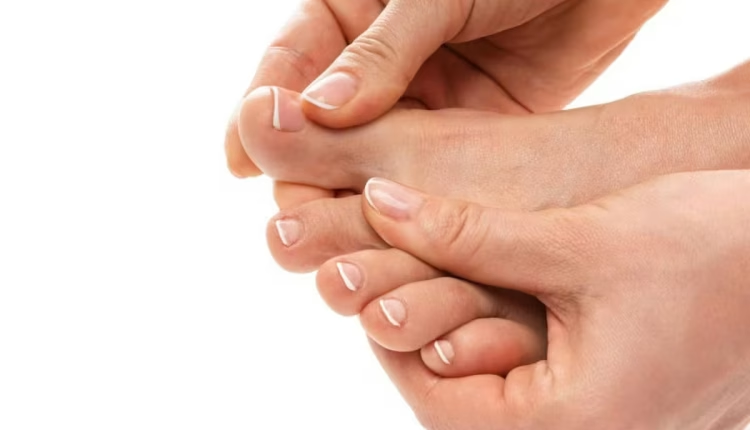If You Notice These 7 Signs in Your Feet, Your Blood Sugar May Be Too High

Diabetes is caused by either inadequate pancreatic insulin production or poor body insulin utilization. Type 1, type 2, prediabetes, and gestational diabetes can harm the body. They all have high blood glucose, though. To prevent the disease from worsening, blood sugar should be checked frequently.....CONTINUE READING THE FULL STORY HERE
Diabetes causes frequent thirst and urination, according to the CDC. Blurred eyesight, unexplained weight loss, hand and foot numbness or tingling, weariness, and dry skin are some symptoms. Diabetic neuropathy and peripheral vascular disease can cause foot issues.
Uncontrolled diabetes and peripheral vascular disease harm nerves and blood flow, causing many body symptoms. Diabetic neuropathy is this. What causes diabetic neuropathy?
Uncontrolled blood sugar levels can harm nerves and impair signaling, according to the Mayo Clinic. Researchers believe excessive blood sugar levels are the main cause of diabetic neuropathy. High blood sugar may damage blood vessels, making it harder to transport oxygen and nutrients to cells.
Variables may increase the risk of this disease. Poor blood sugar control, family history of diabetes, obesity, and smoking raise the risk of diabetic neuropathy, according to the Mayo Clinic.
Diabetics are more likely to develop diabetic neuropathy, which causes limb and foot pain. According to the Mayo Clinic, diabetic neuropathy most often damages nerves in the legs and feet, causing leg, foot, and hand discomfort and numbness. It may also cause cardiovascular, blood vessel, urinary, and digestive disorders. Some people experience mild symptoms, but others have severe, debilitating problems.
2. Foot ulcers: Cracks or deep lesions characterize foot ulcers. 15% of diabetics get open foot ulcers on the soles. Foot ulcers can cause skin abrasions or amputation in extreme cases. Experts believe that preventing diabetes early is the most critical strategy.
Preventing infection in diabetic foot ulcers is your first priority. Decrease pressure, remove dead skin and tissue, treat the lesion with the correct medication, bandage it well, and most importantly, monitor your blood sugar. Never walk barefoot and clean wounds daily.
athlete’s foot
Diabetics may develop athlete’s foot due to nerve damage. Athlete’s foot, a fungal infection, causes itching, redness, and skin cracking. The foot fungus may need medication to be eliminated. The Mayo Clinic says athlete’s foot can spread through infected flooring, towels, and clothing. Antifungal medicines can also cure jock itch and ringworm, which are related to it.
5. Nail fungus.
Diabetics are more likely to get fungal infections in their toenails. Nails may thicken, darken, and become brittle. The nails may detach or be removed. Injuries can also cause nail fungus.
6. gangrene
Diabetes damages blood vessels in your fingers and toes, causing gangrene. Gangrene occurs when blood flow stops, killing tissue. Amputation risk may increase.
Foot deformity
Diabetes can damage nerves and weaken foot muscles, causing hammertoes, club feet, big metatarsal heads, and high-arched feet even in thin people.
This involves daily foot checks for cuts, blisters, rashes, swelling, and other anomalies. Wear shoes that fit well and allow for comfortable walking. Protect your feet.
